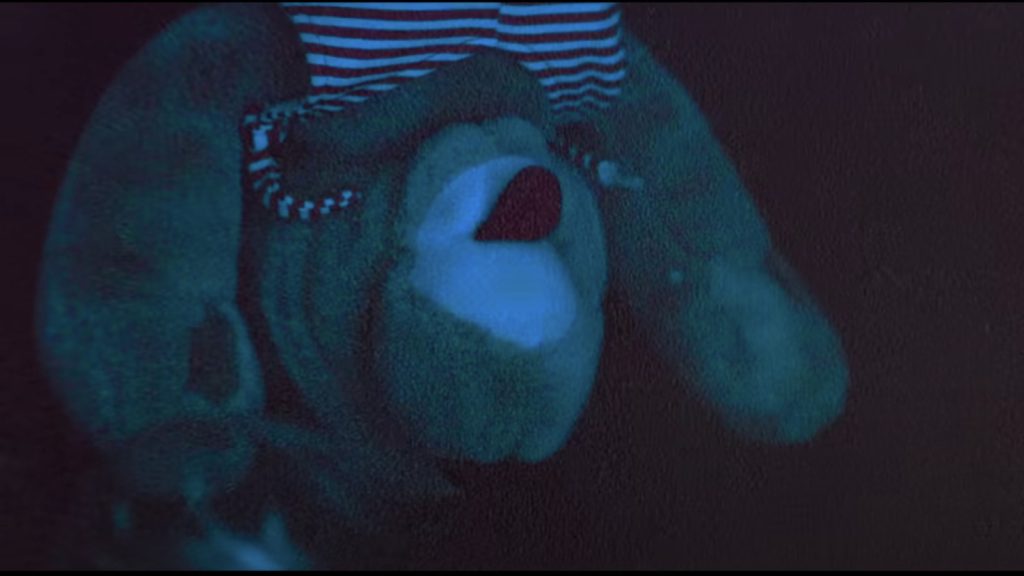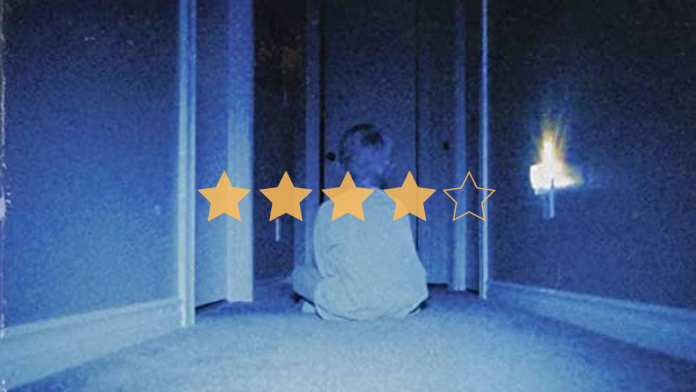The first time that Skinarmarink shows its audience a child’s legs in the frame, there is no indication that in an hour’s time, a simple sign of human life such as this one will come as a sigh of relief. This is the power of Skinamarink, an experimental horror film whose power lies in its sparsity and denial of things taken for granted in cinema—even down to knowing what the characters look like.
★★★★✰
Skinamarink taps into a mode of horror that feels intangible. It speaks to a time when we were children, alone in the dark without our parents. Its narrative is ambiguous and refuses to answer any of the questions it asks, demanding patience and the audience’s willingness to surrender themselves to the nightmare director Kyle Edward Ball is trying to create. Skinamarink is not your average horror film; it is an exercise in evoking a specific atmosphere, an atmosphere of indescribable fear that is quietly affecting despite the film’s excessive runtime.
This indescribable fear is contained in one house in 1995 when two children, Kevin (Lucas Paul) and Kaylee (Dali Rose Tetreault), find themselves home alone one night. Their dad is gone. Without him, they will soon be introduced to the sinister forces watching over them.
Skinamarink thrives on its deliberate imperfections. It is made to look like an old film reel, the poor visual quality giving a sense of haunting realness to the film. As Ball makes his audience stare blankly down a dark corridor, the crackling graininess provides a valuable uncanniness to the image. If films like Paranormal Activity use their found footage style to show crisp, clear images, Skinamarink takes a few steps back, keeping shots ambiguous so it is not always clear what you are looking at.
For other films this approach would simply not work. But Skinamarink’s vintage look makes it truly feel like something other than a film, in the best and most unsettling way. The repeated shots of toys scattered on the floor, of door frames and walls, speak to a specific and innately effective horror aesthetic. It feels like turning up to a horrible accident after it has happened.

The too-close-for-comfort atmosphere is upheld in the film’s audio quality and sound design, with the dialogue muffled and requiring subtitles at points. This is Skinamarink’s most effective method of keeping the audience involved in the nightmare—the poor audio quality forces the viewer to listen harder, and pay closer attention to what is being said. At the same time, it often sounds like things are being said a bit too close to you, making you lean back as you try to hear things. These conflicting aural cues trap the audience in a constant state of leaning in and out, making them an active participant in the horror. Skinamarink only works if the audience is enveloped fully in the horror atmosphere, and the film does a great job at keeping them engaged through a potentially dull experience.
Skinamarink feels designed to speak to someone’s individual nightmares. The main drawback of this is that the film is likely to alienate a lot of people. There is no denying that this singular vision of a child-like nightmare is not going to relate to everyone’s experiences, even if Ball sprinkles in enough humanity to keep the narrative grounded in some sort of reality. Skinamarink will bore some audiences and others will struggle to take it seriously.

This is compounded by the excessive runtime. There is probably a really great eighty-minute cut of Skinamarink if you remove the repeated shots of sofas at the same angle. The pace is very slow, and whilst it intersperses a good amount of haunting imagery and tense interactions, its grasp on its viewer does not last for the entire one hundred minutes.
Having said this, given the simplicity of its premise, the fact that it manages to hold viewer attention for longer than twenty has to be seen as an achievement. Skinamarink is Ball’s directorial debut and had just a $15,000 budget. His sheer confidence to give horror fans something different is the kind of experimental filmmaking that needs to be supported in the face of blockbuster cinema.
The Verdict
By its very nature, Skinamarink is difficult to review. In many ways, it is not a normal film. It does not conform to traditional notions of cinema and will be an experience that will put some off staying in the house of horrors that Kyle Edward Ball has built. But those who are willing to give themselves over to the experiment will find themselves unable to describe exactly what made it so scary, but will be scared all the same. Skinamarink‘s legacy is in its power to linger long after you finish it, and it should be seen as an important addition to the horror genre’s modern renaissance.
Words by James Evenden
Support the Indiependent
We’re trying to raise £200 a month to help cover our operational costs. This includes our ‘Writer of the Month’ awards, where we recognise the amazing work produced by our contributor team. If you’ve enjoyed reading our site, we’d really appreciate it if you could donate to The Indiependent. Whether you can give £1 or £10, you’d be making a huge difference to our small team.
